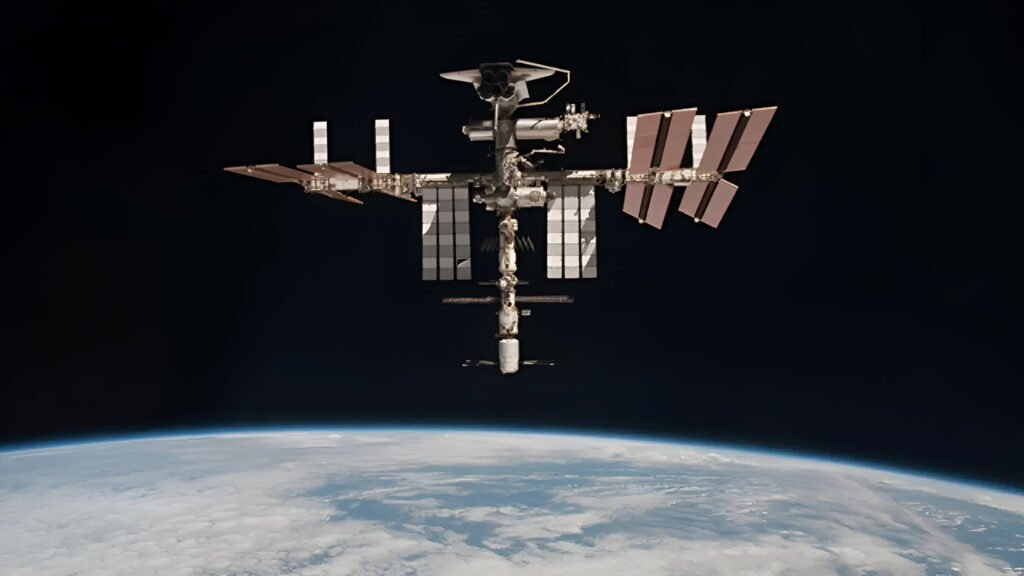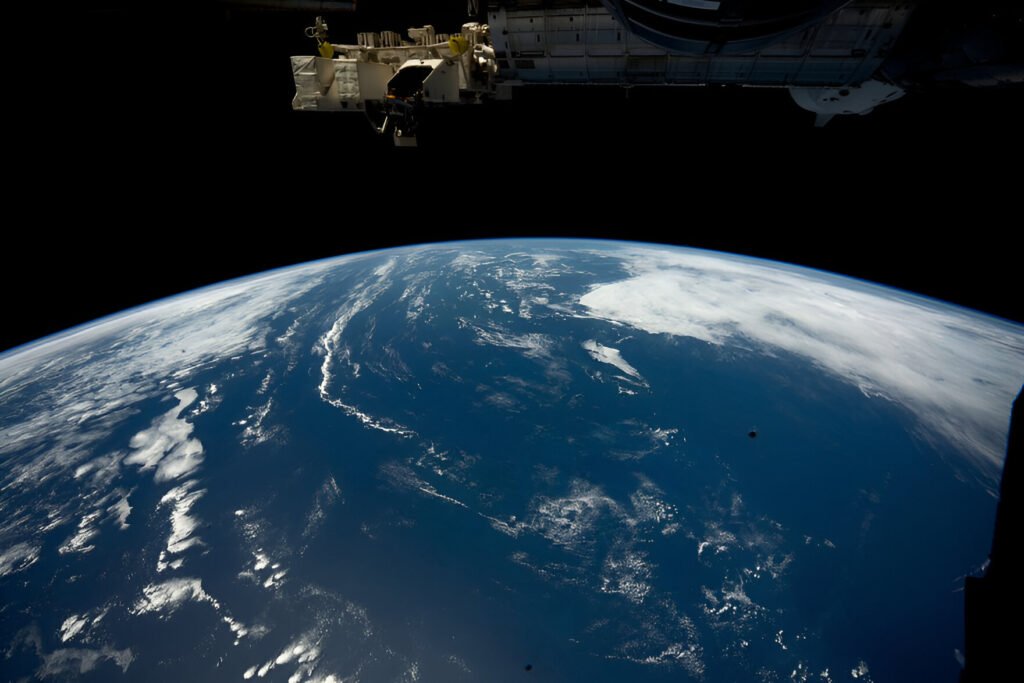
In anticipation for the arrival of the Soyuz MS-27 spacecraft, the International Space Station (ISS) recently did an orbital adjustment to ensure proper docking conditions. NASA astronaut Jonathan Kim captured and shared a intresting video of this maneuver, offering the public a rare glimpse into the complex operations of space station operations.
Understanding Orbital Adjustments
The ISS orbits the Earth at an average altitude of approximately 420 kilometers (about 260 miles). Timely reboosts are required to counter the gradual fall in altitude caused by atmospheric drag. These adjustments are typically done using the thrusters of already docked cargo spacecraft, such as Russia’s Progress vehicles. By using these thrusters, the velocity of the station increases, raising its orbit and ensuring it remains at the apt altitude for upcoming missions.
The Recent Reboost
On April 2, 2025, the ISS did a reboost maneuver with the help of Progress 91 cargo craft’s thrusters, which fired for more than 17 minutes while stationed to the Zvezda service module. This operation was flawlessly planned to place the station at the exact altitude required for the all important arrival of the Soyuz MS-27 spacecraft and its crew.
Soyuz MS-27 Mission Details
With its launch on April 8, 2025, from the Baikonur Cosmodrome in Kazakhstan, the Soyuz MS-27 carried Russian cosmonauts Sergei Ryzhikov and Alexei Zubritsky, along with NASA astronaut Jonathan Kim. The spacecraft docked with the ISS just over three hours after launch, marking another successful collaboration between two space superpowers Roscosmos and NASA. The crew is expected to remain aboard the International Space station for around eight months, doing a variety of scientific research and technology demos aimed at supporting space missions in the future and getting their benefits back on Earth.

Jonathan Kim’s Shared Video
Jonathan Kim, a U.S. Navy lieutenant commander also a dual-designated naval aviator and flight surgeon, documented the whole reboost process and shared the actual footage, providing an insight into the station’s operations. Such videos are invaluable for learning and assessment purposes, allowing the public to appreciate the difficult procedures that ensures the smooth and safe functioning of ISS.
Significance of the Reboost
Orbital adjustments like this are crucial for several reasons:
- Maintaining Optimal Altitude: Regular reboosts counter the atmospheric drag, preventing the ISS from dropping down to lower altitudes where increased drag could lead to gradual decrease.
- Ensuring Docking Precision: Re-adjusting of the station’s orbit ensures that incoming spacecraft, like the Soyuz MS-27, gets docked safely and efficiently. Exact orbital parameters are important to sync the trajectories of the station and the approaching spacecraft.
- Facilitating Scientific Research: A stable orbit is of utmost important for conducting such sensitive experiments on the ISS. Fluctuating altitudea can affect microgravity conditions, which can affect the result of the research done.
International Collaboration
The successful docking of the Soyuz MS-27 highlights the long lasting partnership between the United States and Russia in terms of space exploration. Despite the ongoing geopolitical tensions on Earth, space agencies from these nations continue to collaborate to advance scientific knowledge and maintain significant human presence in space. This collaboration is a testament to the unified power of space exploration.
Looking Ahead
As the new crew settles down into their new routines on the ISS, they will initiate a series of experiments and projects which are designed to push the limits of our understanding of space and its effect on various biological and physical systems on earth. Their work will hugely contribute towards preparations for future missions to the Moon, Mars, and beyond.









